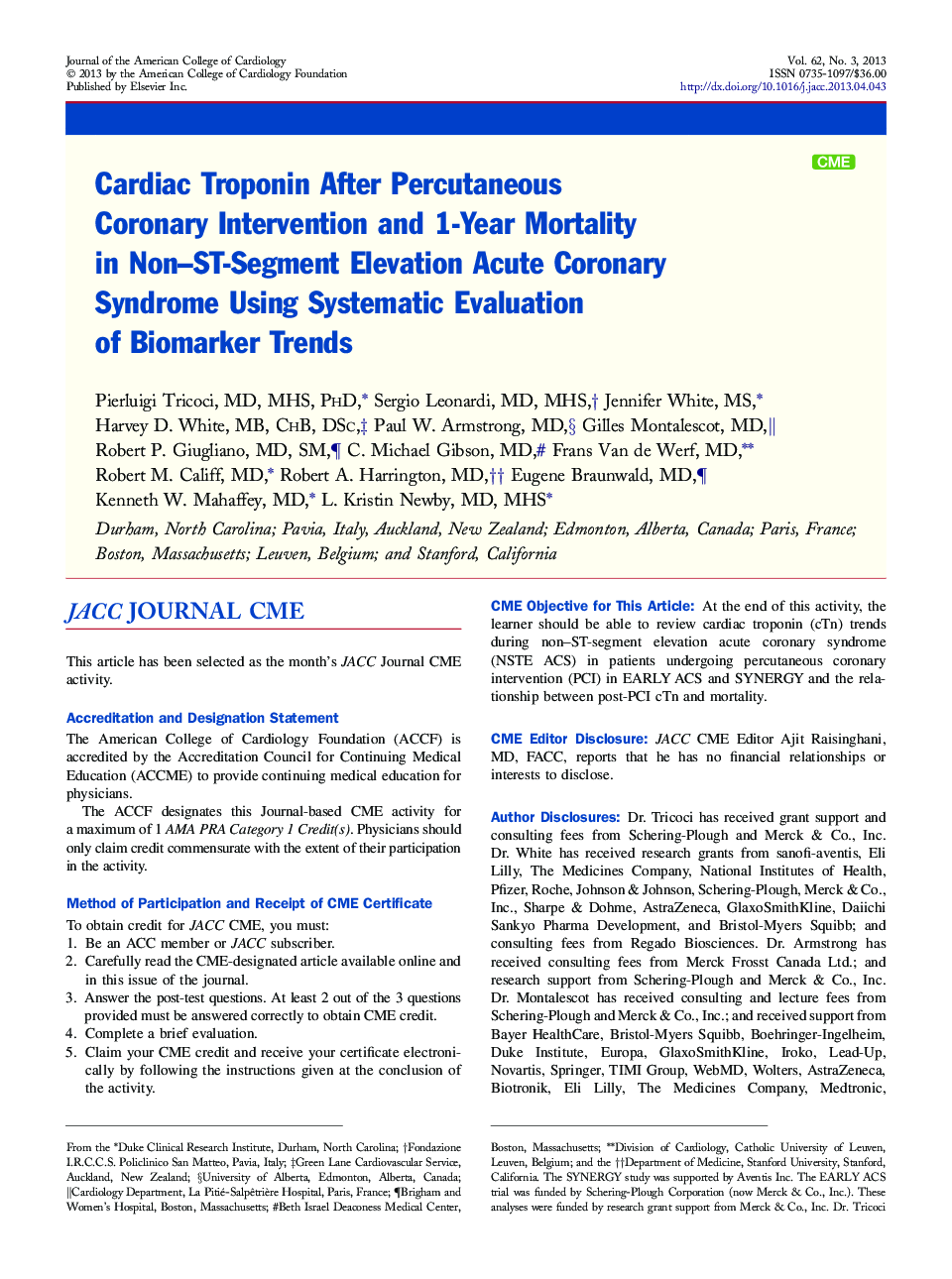| Article ID | Journal | Published Year | Pages | File Type |
|---|---|---|---|---|
| 5983461 | Journal of the American College of Cardiology | 2013 | 10 Pages |
ObjectivesThis study sought to review cardiac troponin (cTn) trends during non-ST-segment elevation acute coronary syndrome (NSTE ACS) in patients undergoing percutaneous coronary intervention (PCI) in the EARLY ACS (Early Glycoprotein IIb/IIIa Inhibition in Non-ST-Segment Elevation Acute Coronary Syndromes) and SYNERGY (Superior Yield of the New Strategy of Enoxaparin, Revascularization and Glycoprotein IIb/IIIa Inhibitors) studies and to study the relationship between post-PCI cTn and mortality.BackgroundThe prognostic value of cTn post-PCI is controversial. In patients with NSTE ACS, it is especially difficult to distinguish between cTn elevations due to PCI or index myocardial infarction (MI).MethodsTime and cTn (indexed by upper limit of normal [ULN]) data pairs were plotted for 10,199 patients and independently reviewed by 2 physicians to identify patients in whom post-PCI cTn elevation could be distinguished from that of index MI. Post-PCI cTn peak was identified for each plot, and its relationship with 1-year mortality was evaluated using Cox modeling, correcting for 15 clinical variables from the EARLY ACS 1-year mortality model (including baseline cTn). We used an identical methodology to assess the association between creatine kinase-myocardial band and 1-year mortality.ResultsPatients with cTn (re-)elevation post-PCI not evaluable were identified and excluded from further analysis (4,198 [41%] with cTn rising prior to PCI; 229 [2%] with missing cTn). Among the remainder (n = 5,772 [57%]), in the multivariable model, peak cTn post-PCI was associated with a 7% increase in mortality (hazard ratio [HR] for 10à ULN increase: 1.07, 95% confidence interval [CI]: 1.02 to 1.11; p = 0.0038). Peak post-PCI creatine kinase-myocardial band was significantly associated with 1-year mortality (HR for 1à ULN increase: 1.13, 95% CI: 1.05 to 1.21; p = 0.0013).ConclusionsWe used a methodology that differentiated post-PCI cTn (re-)elevation from that of presenting MI in more than one-half of patients with NSTE ACS undergoing PCI. This identified a highly significant relationship between post-PCI cTn and 1-year mortality, with implications for both incorporating a cTn post-PCI MI definition and preventing PCI-related myonecrosis.
